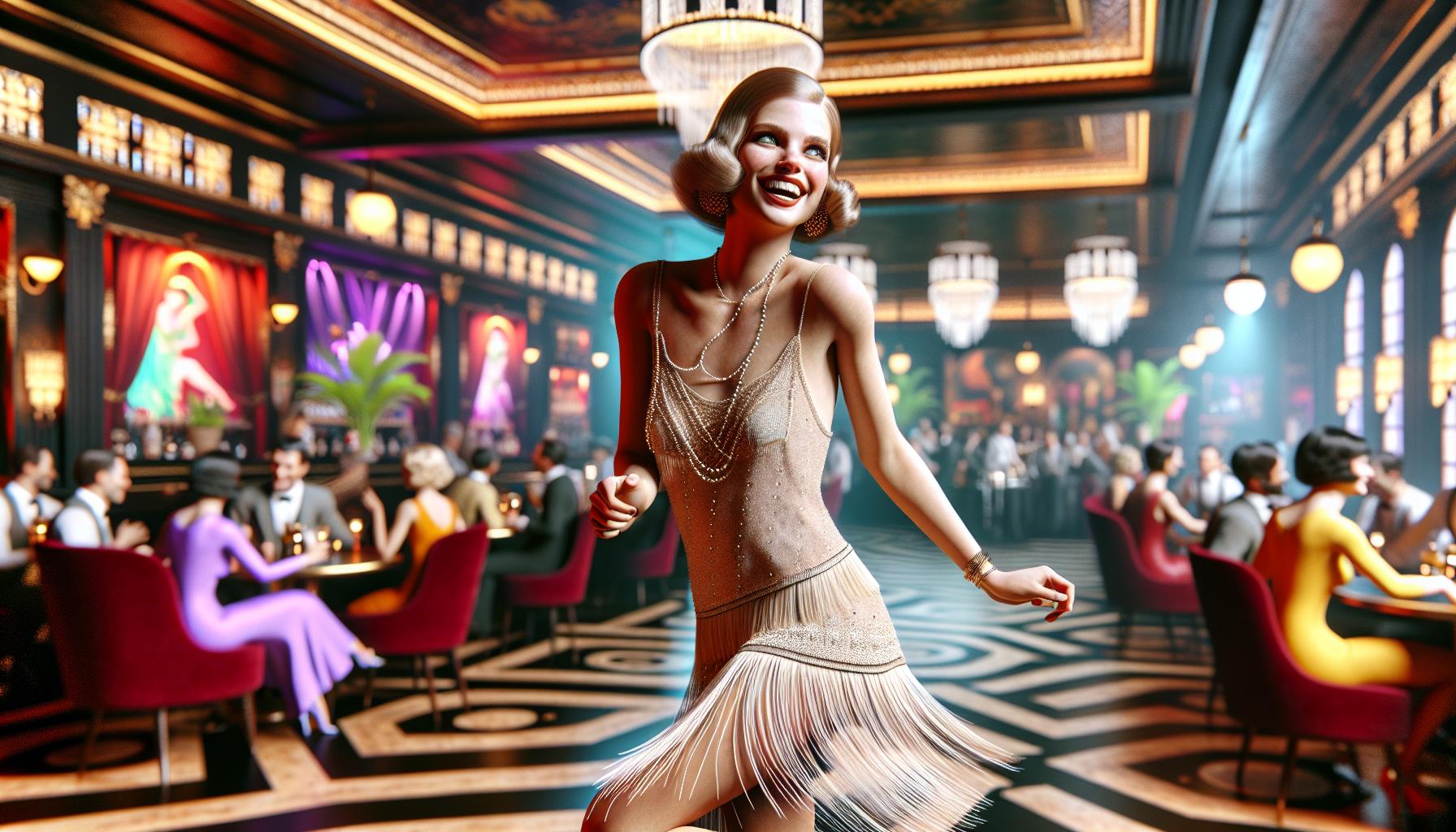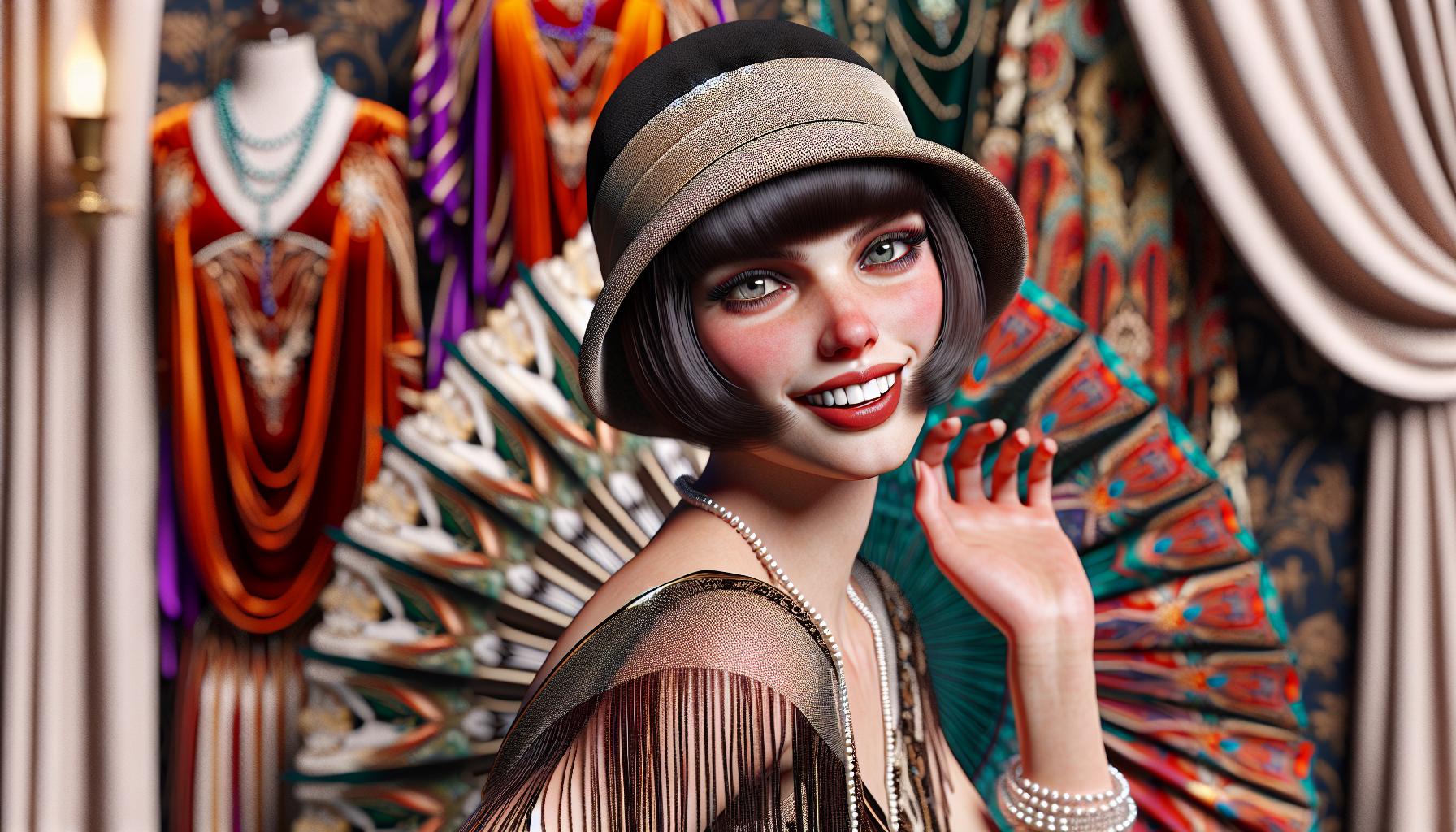The 1920s marked a dazzling decade where women’s fashion took a radical turn, breaking free from the constraints of the past. How Did Women’s Fashion Change in the 1920s? Gone were the days of corsets and layers of fabric; instead, women embraced a more liberated and playful style. Picture flapper dresses that danced with every step and bobbed haircuts that screamed rebellion. This was a time when women didn’t just change their clothes—they changed the game.
As jazz music filled the air and speakeasies thrived, fashion became a reflection of newfound freedom. Women started to express their individuality and challenge societal norms, all while looking fabulous. Dive into the world of 1920s fashion and discover how these bold choices paved the way for modern style, proving that sometimes, a little fringe and a lot of attitude can change the world.
How Did Women’s Fashion Change in the 1920s
Women’s fashion in the 1920s marked a significant shift towards liberation and self-expression. Influences from jazz music and cultural changes encouraged creativity in clothing choices. Flapper dresses emerged, characterized by dropped waistlines and loose fits, enabling ease of movement. Bright colors and bold patterns also gained popularity, further exemplifying the era’s exuberance.
The bobbed haircut became iconic, symbolizing modern femininity and breaking away from traditional styles. Accessories like cloche hats and long strands of pearls complemented the new looks, adding flair and sophistication. Women embraced shorter hemlines, with skirts rising to mid-calf, showcasing legs for the first time in history.
Silk, chiffon, and jersey fabrics became favored choices, adding a luxurious touch to the styles. Tailored suits also gained traction, reflecting a more androgynous silhouette. Brightly colored stockings often replaced no-show tights, completing the playful aesthetic.
While fashion became a medium for self-expression, it also challenged societal norms. The rejection of corsets represented newfound independence and a desire for comfort. Young women, known as flappers, defied conventions with their playful attitudes and daring styles.
Overall, the 1920s shaped women’s fashion as a representation of cultural change. Clothing became a way for women to assert their identities and embrace modernity. This era laid the foundation for contemporary fashion, showcasing the transformative power of style.
Factors Influencing Fashion Changes

The 1920s marked a pivotal time in women’s fashion, driven by various factors that transformed style and expression.
Social Changes
Shifts in societal attitudes propelled changes in fashion. Women’s right to vote in 1920 dramatically influenced their status and sense of autonomy. The flapper movement emerged as a response to these social changes, symbolizing freedom and rebellion against traditional norms. Women began wearing shorter hemlines and looser silhouettes, reflecting their newfound independence. Social gatherings, including jazz clubs and speakeasies, further promoted casual attire. The desire to engage in public life led to more relaxed, comfortable clothing, which fostered a spirit of bold self-expression.
Economic Factors
Economic prosperity during the Roaring Twenties played a crucial role in shaping fashion. The stock market boom contributed to increased disposable income among consumers. As a result, women accessed a variety of stylish and affordable clothing options designed for different occasions. Ready-to-wear clothing became more popular, allowing women to embrace current trends without the need for custom tailoring. Fashion houses flourished, producing vibrant fabrics and innovative designs, which catered to the masses. Luxurious materials like silk and chiffon became accessible, allowing women to indulge in glamour while embracing modernity.
Cultural Movements
Cultural movements significantly impacted women’s fashion choices in the 1920s. The rise of jazz music and the Harlem Renaissance brought a new sense of creativity and excitement. Artists, musicians, and writers celebrated individualism and artistic expression through their work. Fashion reflected this enthusiasm, incorporating bold patterns and bright colors. Additionally, the emergence of cinema popularized iconic styles, influencing women’s desire to emulate film stars. These cultural shifts allowed women to experiment with their looks, resulting in innovative designs that broke free from past conventions.
Key Features of Women’s Fashion in the 1920s

The 1920s introduced bold changes in women’s fashion, reflecting the era’s spirit of liberation and self-expression. Key elements of this decade’s style include the iconic flapper attire and a variety of luxurious fabrics.
Flapper Style
Flapper style defined the decade with its playful and bold characteristics. Dropped waistlines characterized dresses, providing both comfort and a sense of freedom. Loose fits facilitated movement, which was essential for the lively dance culture of the time. Bright colors and extravagant patterns attracted attention, embodying the exuberance of the Roaring Twenties. The bobbed haircut also emerged as a statement of modern femininity, signifying a departure from traditional gender norms. Accessories like cloche hats and pearls completed the look, adding a touch of elegance without compromising individuality. Shorter hemlines showcased legs, a daring move that represented a shift in societal views on femininity.
Fabrics and Textiles
Fabrics played a crucial role in shaping 1920s fashion, influencing the overall aesthetic and comfort level of women’s clothing. Luxurious materials such as silk and chiffon became popular, enhancing the fluidity of dresses. Lightweight and breathable textiles allowed for ease of movement and were often adorned with intricate embellishments. Additionally, the availability of ready-to-wear clothing increased accessibility to fashionable items for women across various social classes. Tailored suits emerged as symbols of androgynous appeal, often made from high-quality fabrics that provided a clean, sophisticated silhouette. Brightly colored stockings added a playful element, making outfits more vibrant and lively.
Iconic Designers and Influencers

The 1920s saw significant contributions from various designers who shaped women’s fashion. Coco Chanel and Jean Patou emerged as prominent figures, each revolutionizing the industry’s landscape.
Coco Chanel
Coco Chanel epitomized modern femininity with her innovative designs. She introduced the concept of casual elegance, allowing women to embrace comfort without sacrificing style. Chanel popularized the little black dress and the use of jersey fabric, which emphasized a relaxed silhouette. Her iconic Chanel No. 5 perfume further solidified her influence, becoming a symbol of luxury. The introduction of the Chanel suit showcased a blend of femininity and tailored structure, encouraging women to adopt a more androgynous look. With these contributions, Chanel transformed women’s fashion and inspired generations to come.
Jean Patou
Jean Patou played a critical role in defining 1920s chic. He gained recognition for his luxurious fabrics and bold patterns, bringing creativity to women’s clothing. Patou’s designs emphasized the flapper aesthetic, featuring loose cuts and lively prints that exuded freedom and vibrancy. His famous “flapper” dress exemplified the era’s playful spirit while promoting greater liberated movement. Additionally, he pioneered the concept of sportswear for women, integrating functionality into fashion. Patou’s influence extended beyond clothing, inspiring women to embrace their individuality and delight in self-expression.
Impact of Women’s Fashion on Society
Women’s fashion in the 1920s significantly reshaped societal norms. The emergence of flapper dresses symbolized liberation and rebellion against traditional constraints. Social acceptance of shorter hemlines marked a bold shift in attitudes towards women’s bodies. As women embraced these new styles, they challenged the long-standing expectations of femininity.
The right to vote for women catalyzed this transformation. With newfound autonomy, many sought to express their independence through fashion. Cultural influences like jazz music and the Harlem Renaissance fostered an environment of creativity. Consequently, these movements encouraged women to experiment with daring styles and emerge from restrictive roles.
Icons like Coco Chanel and Jean Patou played pivotal roles in this fashion revolution. Chanel’s introduction of the little black dress provided an essential wardrobe staple that epitomized casual elegance. Her designs balanced femininity with comfort and structure. Patou’s luxurious fabrics and lively prints also captured the spirit of the era. His focus on sportswear laid the groundwork for functional yet fashionable attire.
The popularity of ready-to-wear clothing made stylish options accessible to many women. Economic prosperity during the Roaring Twenties further fueled this trend. Women with increased disposable income sought to enhance their wardrobes, adding versatility and flair. Accessories such as cloche hats and pearls complemented the vibrant styles, showcasing sophistication.
Overall, the 1920s offered women a platform to assert their identities through fashion. Each choice in clothing represented broader social change. As they embraced modernity, these women laid the foundation for future generations to challenge norms and express themselves freely.
Women’s Fashion in 1920s
How Did Women’s Fashion Change in the 1920s? The 1920s marked a pivotal moment in women’s fashion that transcended mere clothing choices. It was a decade where style became a powerful vehicle for self-expression and societal change. Women embraced new silhouettes and vibrant patterns that challenged traditional norms and celebrated individuality.
This era laid the groundwork for future fashion movements by encouraging women to assert their identities through their attire. With the influence of iconic designers and cultural shifts, the boldness of the 1920s continues to inspire modern fashion, reminding us of the enduring connection between style and empowerment. As women look back on this transformative decade, they recognize its lasting impact on freedom and creativity in fashion.

